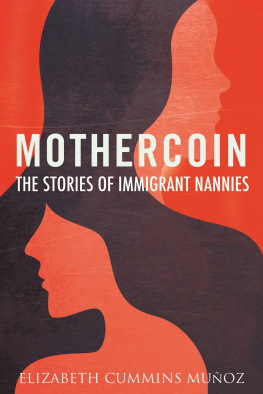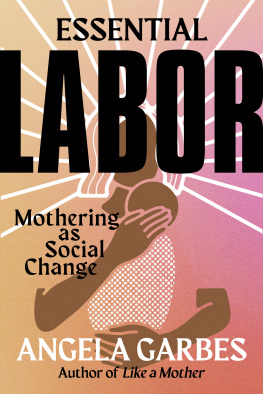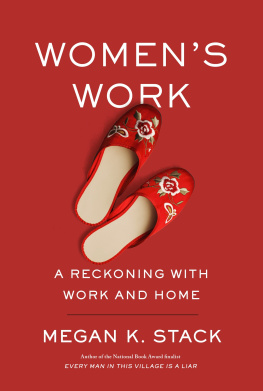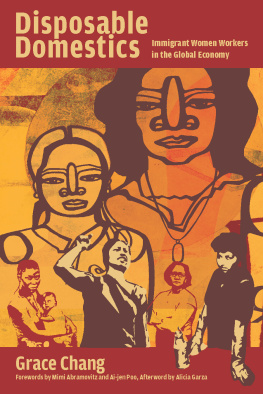Contents
Guide
Pagebreaks of the print version

For Sofa, Lucas, and Amelie.
And in loving memory of Emma Weaver,
who taught me that there is dignity in this work.
In listening
lies wisdom.
LUIS ALBERTO URREA
from the foreword to
Underground America:
Narratives of Undocumented Lives
Introduction
PARK BENCHES
What is a mother worth?
Lafayette Park is a small playground tucked into a corner of a Houston neighborhood known for its family-friendly spaces and two-story stucco and brick homes. In the center, an oak tree stretches its branches over the play equipmentan old swing set, a sandbox bordered by stacked wooden logs, a playhouse with stairs worn concave by years of sneakers and sandals and bare feet climbing each rung. The live oak hovers over the place. Older than the climbing ladder or the squeaky swings or the quiet city street beside it, it is a protective presence shielding children from the suffocating heat of a Houston summer or the cold wind of a January afternoon. An old iron bench in the shape of a square surrounds the thickest part of the trees trunk, so that a tired caregiver, weary of the heat and the sun or the work of the day, might lean back against the oaks rough bark and watch the children play.
On a cool January afternoon several years ago, I took a place on this bench next to a woman I call Sara, and I asked her to tell me about her life. At twenty-five, Sara carries her years heavy on her shoulders. As children in El Salvador, she and her younger sisters watched their mother leave to migrate north for work in the private homes of Texas. At fourteen, she herself left her village and schooling and girlhood behind to follow the same path. For over a decade, she has cleaned the homes of this city, looked after its little ones, walked its dogs. She has missed her own childrens school celebrations and after-school homework sessions, and spent long summer days chasing after flushed blond cheeks and picking up shorts and bathing suits from bathroom floors, while her own children waited for her in the care of othersa distracted neighbor, an ambivalent aunt. Sara has bought a house and sent her children to good schools. She has supported her grandparents and younger sister back home for years. And she has asked herself if her mothers choice was the right one. She doesnt think so. Theres been so much pain. But then... the house, the education, the hope.
After about two hours of conversation, my children and hers begin to whine and call for us. Cheeks chapped, cold burrowing in beneath unzipped jackets and discarded sweaters as the sun falls behind a line of wild ligustrum. Saras son and daughter climb into an old SUV, mine into a worn minivan, and we each go back to our homes and our dishes and our bills and our laundry, and to the hopes and fears and uncertainties that will carry us into the night. For me, one question eclipses the others: How much is a mother worth?
There are deep and complicated truths at the heart of this question. Some of these have to do with the distance between what a society says about its mothers and how it treats them. Others have to do with the way a culture teaches its children that value is disbursed differently among its various groupsthe privileged and the poor, the fair and the dark, the masculine and the feminineand how those children grow to reproduce the same cultural value system. And some part of the truth of a mothers worth lies deep in her own chest, in the place where a societys words and actions, and a cultures value lessons, meet the truths she alone has come to know. At this meeting place of world and woman, a sense of self emerges. Though I did not know it at the time, when I invited Sara to tell me about her life that day in Lafayette Park, the story she told expressed her own sense of self. Saras narrative painted the portrait of a woman conflicted, weary, proud, and overwhelmed by the limits placed on all her good intentionsas a caring nanny, a selfless mother, and a dignified worker.
It has been over a decade since I began asking women like Sara for their stories. Ive heard many and read many more, each as unique as the woman who told it, yet all of them bound up in the complicated question of value as it pertains to motherhood, domestic work, and the ideological minefields of immigration policy. Despite the womens individual differences, the stories they tell reveal common themes. All must choose among limited options and carry the burden of choice alone. As they live out the consequence of their choices, they all encounter the public lessons that dark-skinned women learn about whose needs come first and that immigrants learn about the power of status to deny basic humanity. And within the private space of homes much like the two-story stuccos that surround Lafayette Park, each woman must negotiate culture and language and intimacy and livelihood in the shadows of an unregulated industry defined by the unique vulnerabilities of paid carework. Together, these common themes tell the story of immigrant nannies in this country.
The mothercoin
Women like Sara and her mother are part of a broad phenomenon of international migration for domestic and carework that has been growing since the end of the last century, spurred by widening global inequality and an increased demand for domestic service in the north. As cleaners and caregivers move from poorer regions into wealthier ones, they leave behind a material and emotional absence that is keenly felt by their families in the global south. North of these borders, children of wealthier regions are bathed and diapered and cared for in clean homes with folded laundry and sopa de arroz simmering on the stove, while their parents work ever longer hours and often struggle with these daily separations.
Somewhere in between, women like those featured here fashion a life at the crossroads of globalization, immigration, and the judgments we make about good mothers who stay home and bad mothers who leave. The mothercoin has something to do with these judgments. When love is elevated and labor is compensated, mothering for pay becomes a complicated proposition. Because even as the work of mothering has become valuable currency in the shadow economy of a largely invisible industry, for these women and those who employ them, the cultural ideal of motherhood remains rooted in loving presence and divorced from economic self-interest. In our popular imagination, mothers are somehow always presentloving tirelessly, sacrificing constantly, protecting fiercely, and making the work of housekeeping and family nourishment as neat and invisible as the pressed sheets of a freshly made bed.
The role of the immigrant nanny is to facilitate this ideal, but it comes at a cost. The choices she makes are limited by the realities she encountersregional inequity exacerbated by globalism and the neoliberal policies meant to manage it, labyrinthine immigration practices that refuse to account for the reality of the female underside of globalization, and maternity and childcare policies in the US that willfully ignore the social and economic value of childrearing. Fed by the ideological rhetoric of immigration and womens work, these broken systems are patched together by a steady stream of migrant women who are told they are responsible for the choices they makefor the desperation that pushes them north, the children whose needs they cannot meet, and the emotional entanglements that compromise their service.








